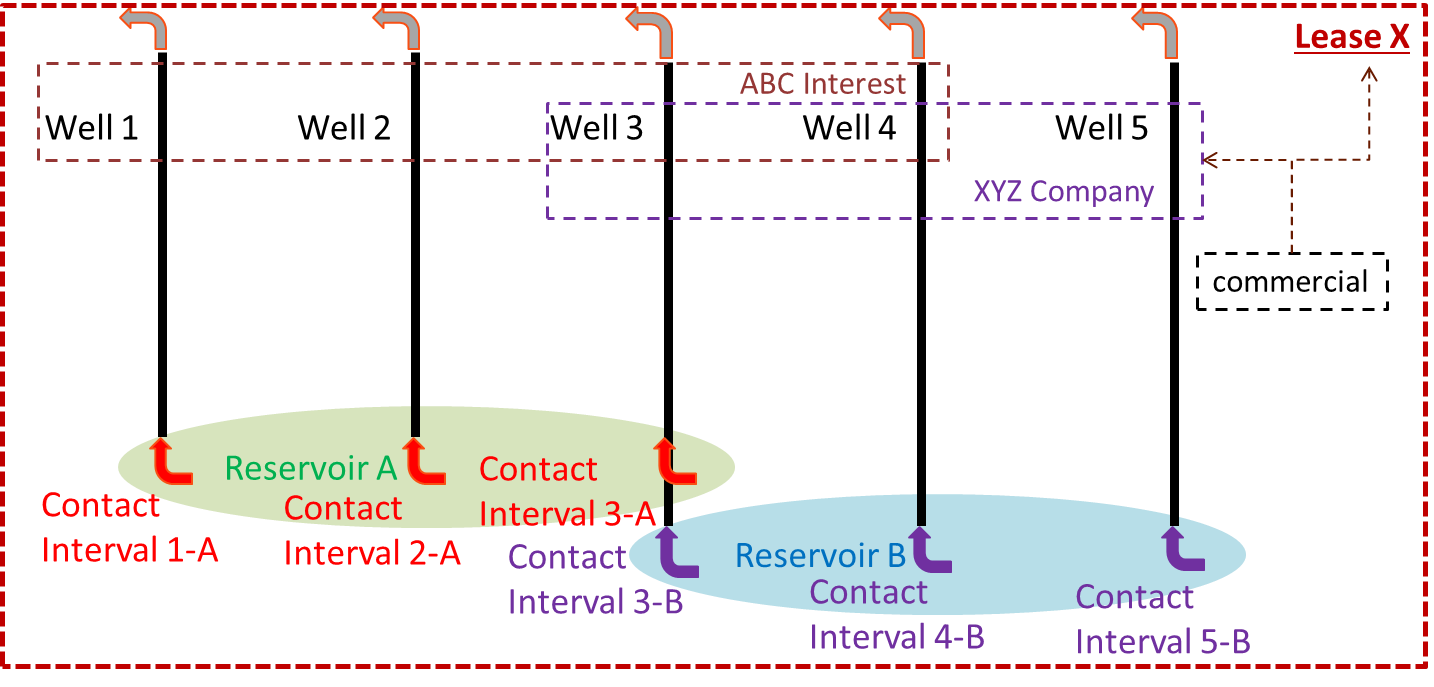6.1 Reporting Entities: Physical and Commercial Layout
| Topic Version | 1 | Published | 12/09/2016 | |
| For Standard | PRODML v2.0 | |||
A set of Reporting Entities are provided to support the example of a small field containing 5 wells but with sufficient complexities to demonstrate the main features of the data transfer model.
Figure 6.1-1 shows the reporting entities for the example. The physical reporting entities include:
- 5 wells (Well 1, 2, 3, 4, 5, which intersect 2 reservoirs that each have 3 contact intervals):
- Reservoir A
- Contact Interval 1-A, 2-A and 3-A
- Reservoir B
- Contact Interval 3-B, 4-B and 5-B
- Note that Well 3 intersects both reservoirs at Contact Intervals 3A and 3B.
Commercially, these wells sit in Lease X. A group called ABC Interest (perhaps land owners) has an interest in Wells 1-4, and the XYZ Company (e.g., a non-operating partner) has an interest in Wells 3-5. So ABC Interest and the XYZ Company have commercial interest; therefore, are candidates to receive reports about production from these assets/reporting entities.
The XML for the example is explained below, but you can begin to see the various physical and commercial reporting entities that might arise from this simple example.

The asset description is completed by Figure 6.1-2 , which shows the reporting entities outside the asset’s direct control and which play a part in transfers and terminal Liftings. These are a separate Lease which transfers production to Lease X, and an oil tanker, Barge 99, which after a tanker lifting, transports production to Terminal Z.
